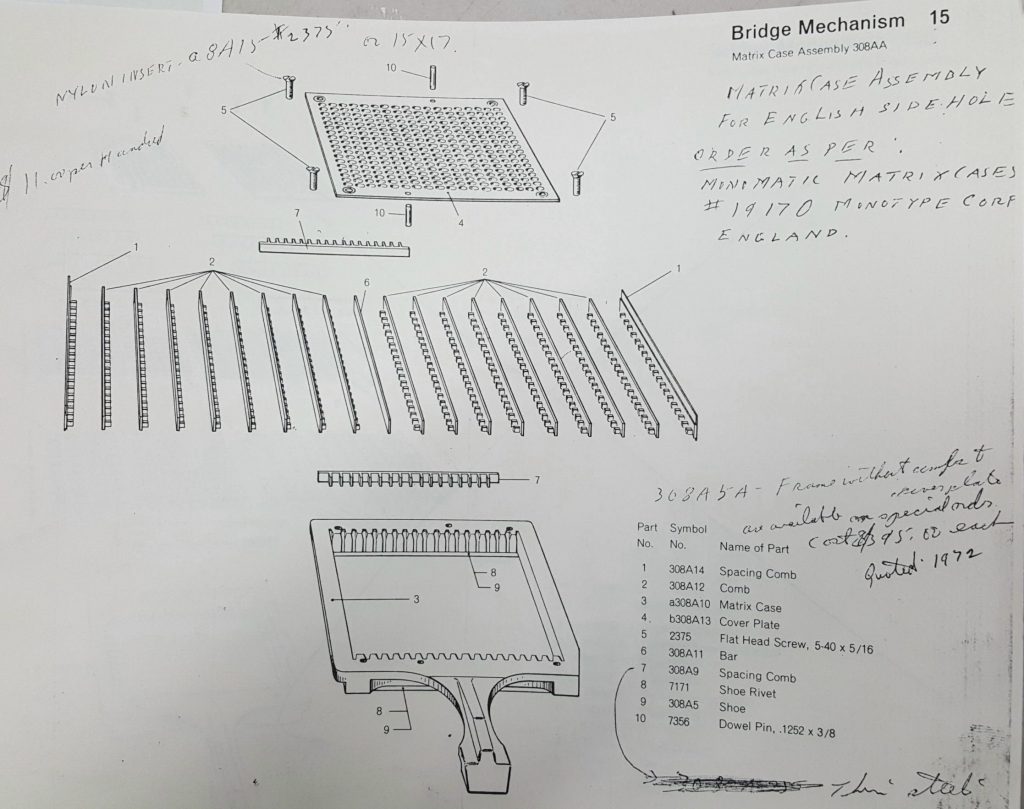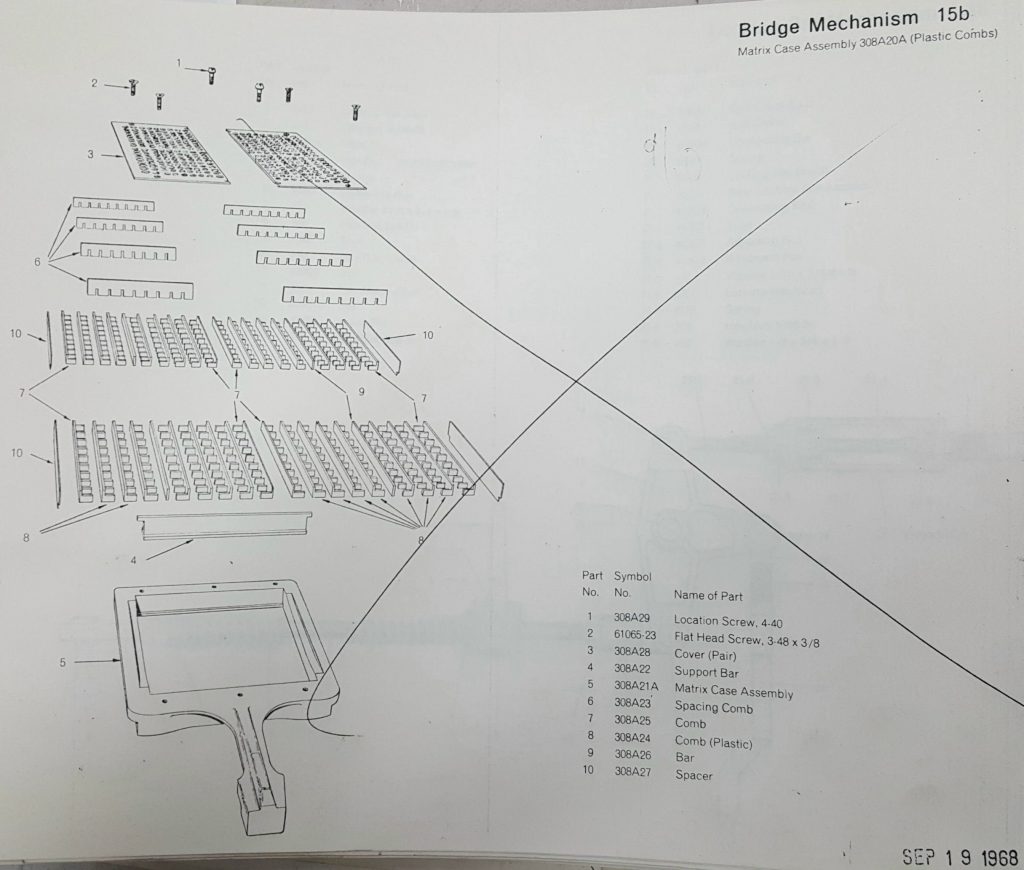I previously posted about some Monotype diecase combs which were too long for any diecases that could be used on the Composition Caster. I did not think they were for the newer Monomatic caster because I thought the diecases for this machine were divided into four 9×9 blocks of cellular matrices.
After looking through the poor quality copy I have to the Monomatic II parts manual, I found that this caster supported both the divided diecases and also ones holding a single 18×18 grid of matrices.
It is still a bit of a mystery to me how the caster can handle both styles of diecase, since in the divided diecase, half the matrices are (what appears to be) an entire column (0.2″) displaced from their positions in the undivided diecase. I think the resolution of the quandary lies in the method used by the Monomatic to select the diecase column:
The Composition Caster uses 14 air channels to select one of 15 columns in the original style diecase. If no air channels are selected, the diecase positions by default to column O. Any single air channel, when selected, positions the diecase to the corresponding column A through N. If multiple channels are selected the diecase positions to the one closest to the A position. More advanced features of the caster (including the 17-column diecase) use combinations of these air channels to control them.
The Monomatic uses 9 air channels to select one of 18 positions. Of those, 8 select one of 9 positions in a manner similar to the composition caster: No channels selects the highest position, and the 8 channels individually select the next 8 positions. The last air channel acts as a shift, putting a spacer in the mechanism to move the diecase by 9 positions, thus allowing access to a total of 18 positions.
Not relevant to this particular topic, but the same mechanism (8 individual selector channels, default to a 9th position, with a shift) is used for row selection and set-size wedge positioning. These 3 sets of 9 air channels, plus a channel to force a low quad, along with the original S, .0075, and .0007 channels make up 31 channels, and the Monomatic uses exactly the same paper tower to read the ribbon as the composition caster does.
The difference between the divided and undivided diecases could be accommodated by changing out the column-selection spacer that is activated by the shift mechanism.



Leave a Reply